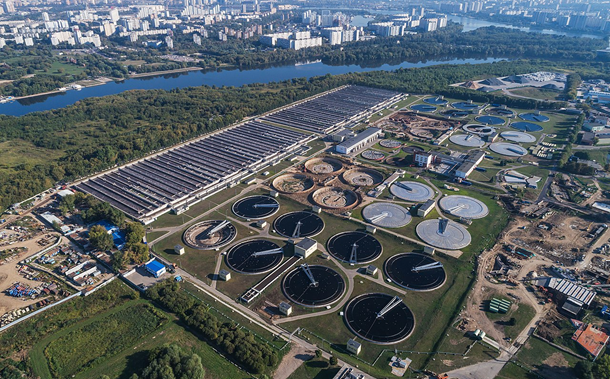Geopolymer Mortars from Tuff Waste: A Circular Approach
Downloads
This study explores the potential use of volcanic tuff mining waste in geopolymer mortar formulations, aiming to enhance recycling and promote sustainable construction. Two filler-to-binder ratios (70/30 and 65/35) were developed using a geopolymer binder composed of tuff waste, dolomite powder, and sodium silicate. The mortars were subjected to heat treatments at 200, 350, 500, and 650°C for 8.5 hours. Compared to natural tuff (reference sample), water absorption decreased from 16.8% to 7.7%, with the lowest absorption observed in the 65/35 composition. Flexural strengths increased by 0.97% to 117.1%, and compressive strengths improved by 17.8% to 97.1%, reaching their maximum at 500°C; at 650°C, strengths declined due to water evaporation, shrinkage, and microcrack formation. Softening coefficients increased by over 10%, indicating enhanced resistance to water-induced softening. The study demonstrates that incorporating dolomite powder improves water resistance, while tuff waste serves effectively as both filler and binder component. Moreover, geopolymer mortars produce significantly lower CO₂ emissions (0.133 t/m³) compared to ordinary Portland cement mortars (0.415 t/m³), highlighting their environmental advantage. These results underscore the potential of tuff-based geopolymer mortars for sustainable construction applications.
Downloads
[1] Nodehi, M., & Taghvaee, V. M. (2022). Alkali-Activated Materials and Geopolymer: a Review of Common Precursors and Activators Addressing Circular Economy. Circular Economy and Sustainability, 2(1), 165–196. doi:10.1007/s43615-021-00029-w.
[2] Zaetang, Y., Wongkvanklom, A., Pangdaeng, S., Hanjitsuwan, S., Wongsa, A., Sata, V., & Chindaprasirt, P. (2025). Performance of Auto Glass Powder-High Calcium Fly Ash Geopolymer Mortar Exposed to High Temperature. Civil Engineering Journal (Iran), 11(6), 2343–2358. doi:10.28991/CEJ-2025-011-06-010.
[3] Zou, H. Y., Zhong, W. L., Zhao, X., & Fan, L. F. (2024). Optimizing geopolymer mortar for shotcrete applications by focusing on flowability and early-age mechanical characteristics. Construction and Building Materials, 418, 135290. doi:10.1016/j.conbuildmat.2024.135290.
[4] Liu, Y., Dong, B., Zhang, Y., Hou, D., & Wang, Y. (2024). Limestone powder-based alkali-activated materials: Influence of activator type. Powder Technology, 434, 119334. doi:10.1016/j.powtec.2023.119334.
[5] Arzumanyan, A., & Muradyan, N. (2023). Development of composite binders based on volcanic tuff waste. International Journal of Applied Science and Engineering, 21(1), 2022347. doi:10.6703/IJASE.202403_21(1).004.
[6] Henao Rios, L. M., Hoyos Triviño, A. F., Villaquirán-Caicedo, M. A., & de Gutiérrez, R. M. (2023). Effect of the use of waste glass (as precursor, and alkali activator) in the manufacture of geopolymer rendering mortars and architectural tiles. Construction and Building Materials, 363, 129760. doi:10.1016/j.conbuildmat.2022.129760.
[7] Arzumanyan, A., Muradyan, N., Arzumanyan, A., Laroze, D., & Barseghyan, M. (2024). Non-Cement Building Materials from Volcanic Rock Extraction Waste. Buildings, 14(6), 1555. doi:10.3390/buildings14061555.
[8] Kolade, A. S., Ikotun, B. D., & Oyejobi, D. O. (2025). Composition and performance driven mix design methodology for geopolymer mortars. Discover Civil Engineering, 2(1), 162. doi:10.1007/s44290-025-00327-4.
[9] Davidovits, J. (2008). Geopolymer chemistry and applications. Geopolymer Institute. Saint-Quentin, France.
[10] Huntzinger, D. N., & Eatmon, T. D. (2009). A life-cycle assessment of Portland cement manufacturing: comparing the traditional process with alternative technologies. Journal of Cleaner Production, 17(7), 668–675. doi:10.1016/j.jclepro.2008.04.007.
[11] Gopalakrishnan, R., & Kaveri, R. (2021). Using graphene oxide to improve the mechanical and electrical properties of fiber-reinforced high-volume sugarcane bagasse ash cement mortar. European Physical Journal Plus, 136(2), 202. doi:10.1140/epjp/s13360-021-01179-4.
[12] Burduhos Nergis, D. D., Abdullah, M. M. A. B., Vizureanu, P., & Mohd Tahir, M. F. (2018). Geopolymers and Their Uses: Review. IOP Conference Series: Materials Science and Engineering, 374(1), 12019. doi:10.1088/1757-899X/374/1/012019.
[13] Shi, C., Jiménez, A. F., & Palomo, A. (2011). New cements for the 21st century: The pursuit of an alternative to Portland cement. Cement and Concrete Research, 41(7), 750–763. doi:10.1016/j.cemconres.2011.03.016.
[14] McLellan, B. C., Williams, R. P., Lay, J., Van Riessen, A., & Corder, G. D. (2011). Costs and carbon emissions for geopolymer pastes in comparison to ordinary Portland cement. Journal of Cleaner Production, 19(9–10), 1080–1090. doi:10.1016/j.jclepro.2011.02.010.
[15] Morais, A. Í. S., Palmeira, D. K. O., Nascimento, A. M. D. S. S., Osajima, J. A., Garcia, R. R. P., & Huamán-Mamani, F. A. (2025). Development of Geopolymeric Mortar from Metakaolin and Ignimbrite from the Añashuayco Quarries, Peru, for Civil Construction. Sustainability (Switzerland), 17(13), 5714. doi:10.3390/su17135714.
[16] Boumaza, A., Khouadjia, M. L. K., Isleem, H. F., Hamdi, O. M., & Khishe, M. (2025). Effect of blast furnace slag on the fresh and hardened properties of volcanic tuff-based geopolymer mortars. Scientific Reports, 15(1), 13651. doi:10.1038/s41598-025-98382-5.
[17] Arzumanyan, A., Arzumanyan, A., & Muradyan, N. (2019). Heat-Acid-Resistant Light Concretes on the Base of Volcanic Tuff Lava and Pumice Aggregates of Armenia. Key Engineering Materials, 828, 141–145. doi:10.4028/www.scientific.net/kem.828.141.
[18] Sahakyan, E., Arzumanyan, A., & Muradyan, N. (2022). Inorganic Polymeric Materials Based on Natural Silicate and Aluminosilicate Raw Materials. Key Engineering Materials, 906, 1–6. doi:10.4028/www.scientific.net/kem.906.1.
[19] Sahakyan, E., Arzumanyan, A., & Muradyan, N. (2019). Physical and chemical processes of volcanic rock hardening with alkaline silicates. IOP Conference Series: Materials Science and Engineering, 698(2), 22078. doi:10.1088/1757-899X/698/2/022078.
[20] Ekinci, E., Türkmen, İ., Kantarci, F., & Karakoç, M. B. (2019). The improvement of mechanical, physical and durability characteristics of volcanic tuff based geopolymer concrete by using nano silica, micro silica and Styrene-Butadiene Latex additives at different ratios. Construction and Building Materials, 201, 257-267. doi:10.1016/j.conbuildmat.2018.12.204.
[21] SDA. (2025). Mining Industry in Armenia 2011. Research and Information Report: Armenian Development Agency, Yerevan, Armenia.
[22] Galstyan, G., Arzumanyan, A., Tadevosyan, V., & Muradyan, N. (2023). Study of Stone Materials in “St. Astvatsatsin” Church of “Tatev” Monastery Complex. AIP Conference Proceedings, 2821(1), 0158656. doi:10.1063/5.0158656.
[23] GOST 8269.1-97. (1997). Maintainous Rock Road-Metal and Gravel, Industrial Waste Products for Construction Works. Methods of Chemical Analysis. GOST, Moscow, Russia. Available online: https://files.stroyinf.ru/Index2/1/4294851/4294851516.htm (accessed on September 2025). (In Russian).
[24] Yang, K. H., Song, J. K., Ashour, A. F., & Lee, E. T. (2008). Properties of cementless mortars activated by sodium silicate. Construction and Building Materials, 22(9), 1981–1989. doi:10.1016/j.conbuildmat.2007.07.003.
[25] Chen, Y., Wang, X., Yu, C., Ding, J., Deng, C., & Zhu, H. (2019). Properties of inorganic high-temperature adhesive for high-temperature furnace connection. Ceramics International, 45(7), 8684–8689. doi:10.1016/j.ceramint.2019.01.190.
[26] Davidovits, J. (2017). Geopolymers: Ceramic-like inorganic polymers. Journal of Ceramic Science and Technology, 8(3), 335–350. doi:10.4416/JCST2017-00038.
[27] Mehmood, M. (2018). Dolomite and dolomitization model - a short review. International Journal of Hydrology, 2(5), 549–553. doi:10.15406/ijh.2018.02.00124.
[28] Warren, J. (2000). Dolomite: Occurence, evolution and economically important associations. Earth Science Reviews, 52(1–3), 1–81. doi:10.1016/S0012-8252(00)00022-2.
[29] BS EN 1097-3:1998. (1998). Tests for mechanical and physical properties of aggregates - Part 3: Determination of loose bulk density and voids. Bulgarian Institute for Standardization (BSI). London, United Kingdom.
[30] EN 196-6:2018. (2018). Methods of Testing Cement – Part 6: Determination of Fineness. European Committee for Standardization (CEN). Brussels, Belgium.
[31] AST 100-94. (1995). Building Stones from Tuff, Basalt and Travertine: Specifications. Armstandard, Yerevan, Armenia.
[32] EN 12372:2022. (2022). Natural Stone Test Methods – Determination of Flexural Strength under Concentrated Load. European Committee for Standardization (CEN). Brussels, Belgium.
[33] Ovbeniyekede, O. S., Adenan, D. S. Q. A., Ahmad, M., & Kamaruddin, K. (2018). Water Absorption and Compressive Strength of Self-Compacting Concrete Incorporating Fly Ash and Quarry Dust. International Journal of Scientific and Research Publications (IJSRP), 8(10), 8. doi:10.29322/ijsrp.8.10.2018.p8248.
[34] Fernández-Jiménez, A., Palomo, A., Pastor, J. Y., & Martín, A. (2008). New cementitious materials based on alkali-activated fly ash: Performance at high temperatures. Journal of the American Ceramic Society, 91(10), 3308–3314. doi:10.1111/j.1551-2916.2008.02625.x.
[35] Zawrah, M. F., Gado, R. A., Feltin, N., Ducourtieux, S., & Devoille, L. (2016). Recycling and utilization assessment of waste fired clay bricks (Grog) with granulated blast-furnace slag for geopolymer production. Process Safety and Environmental Protection, 103, 237–251. doi:10.1016/j.psep.2016.08.001.
[36] Almalkawi, A. T., Hamadna, S., & Soroushian, P. (2017). One-part alkali activated cement based volcanic pumice. Construction and Building Materials, 152, 367-374. doi:10.1016/j.conbuildmat.2017.06.139.
[37] Mudgal, M., Singh, A., Chouhan, R. K., Acharya, A., & Srivastava, A. K. (2021). Fly ash red mud geopolymer with improved mechanical strength. Cleaner Engineering and Technology, 4, 100215. doi:10.1016/j.clet.2021.100215.
[38] Diaz, E. I., Allouche, E. N., & Eklund, S. (2010). Factors affecting the suitability of fly ash as source material for geopolymers. Fuel, 89(5), 992–996. doi:10.1016/j.fuel.2009.09.012.
[39] Chen, W., Li, B., Guo, M. Z., Wang, J., & Chen, Y. T. (2023). Impact of heat curing regime on the compressive strength and drying shrinkage of alkali-activated slag mortar. Developments in the Built Environment, 14, 100123. doi:10.1016/j.dibe.2023.100123.
[40] AST EN 1469-2015 (2015). Natural stone products – Slabs for cladding Requirements. Armstandard, Yerevan, Armenia.
[41] Fernandez-Jimenez, A., García-Lodeiro, I., & Palomo, A. (2006). Durability of alkali-activated fly ash cementitious materials. Journal of Materials Science, 42(9), 3055–3065. doi:10.1007/s10853-006-0584-8.
[42] Plando, F. R. P., Supnad, M. V., & Maquiling, J. T. (2025). Assessment of compressive strength, microstructure, thermal, and radiation shielding properties of Taal volcanic ash-based geopolymer mortar. Journal of Building Engineering, 99, 111572. doi:10.1016/j.jobe.2024.111572.
[43] Gartner, E. (2004). Industrially interesting approaches to “low-CO2” cements. Cement and Concrete Research, 34(9), 1489–1498. doi:10.1016/j.cemconres.2004.01.021.
[44] Yu, Z., Zhang, T., Deng, Y., Han, Y., Zhang, T., Hou, P., & Zhang, G. (2023). Microstructure and mechanical performance of alkali-activated tuff-based binders. Cement and Concrete Composites, 139, 105030. doi:10.1016/j.cemconcomp.2023.105030.
[45] Wang, T., Fan, X., & Gao, C. (2024). Development of high-strength geopolymer mortar based on fly ash-slag: Correlational analysis of microstructural and mechanical properties and environmental assessment. Construction and Building Materials, 441, 137515. doi:10.1016/j.conbuildmat.2024.137515.
[46] Saloni, Parveen, Lim, Y. Y., & Pham, T. M. (2021). Effective utilisation of ultrafine slag to improve mechanical and durability properties of recycled aggregates geopolymer concrete. Cleaner Engineering and Technology, 5, 100330. doi:10.1016/j.clet.2021.100330.
[47] Thwe, E., Khatiwada, D., & Gasparatos, A. (2021). Life cycle assessment of a cement plant in Naypyitaw, Myanmar. Cleaner Environmental Systems, 2, 100007. doi:10.1016/j.cesys.2020.100007.
[48] Hasanbeigi, A., Price, L., & Lin, E. (2012). Emerging energy-efficiency and CO2 emission-reduction technologies for cement and concrete production: A technical review. Renewable and Sustainable Energy Reviews, 16(8), 6220–6238. doi:10.1016/j.rser.2012.07.019.
[49] Hills, T., Florin, N., & Fennell, P. S. (2016). Decarbonising the cement sector: A bottom-up model for optimising carbon capture application in the UK. Journal of Cleaner Production, 139(15), 1351–1361. doi:10.1016/j.jclepro.2016.08.129.
[50] Sanjuán, M. Á., Andrade, C., Mora, P., & Zaragoza, A. (2020). Carbon dioxide uptake by cement-based materials: A Spanish case study. Applied Sciences (Switzerland), 10(1), 339. doi:10.3390/app10010339.
[51] Abutaqa, A., Mohsen, M. O., Aburumman, M. O., Senouci, A., Taha, R., Maherzi, W., & Qtiashat, D. (2024). Eco-Sustainable Cement: Natural Volcanic Tuffs’ Impact on Concrete Strength and Durability. Buildings, 14(9), 2902. doi:10.3390/buildings14092902.
[52] Kabay, N., Mert, M., Miyan, N., & Omur, T. (2021). Pumice as Precursor in Geopolymer Paste and Mortar. Journal of Civil Engineering and Construction, 10(4), 225–236. doi:10.32732/jcec.2021.10.4.225.
[53] Youssf, O., Safaa Eldin, D., & Tahwia, A. M. (2025). Eco-Friendly High-Strength Geopolymer Mortar from Construction and Demolition Wastes. Infrastructures, 10(4), 76. doi:10.3390/infrastructures10040076.
[54] Khouadjia, M. L. K., Bensalem, S., Belebchouche, C., Boumaza, A., Hamlaoui, S., & Czarnecki, S. (2025). Sustainable Geopolymer Tuff Composites Utilizing Iron Powder Waste: Rheological and Mechanical Performance Evaluation. Sustainability (Switzerland), 17(3), 1240. doi:10.3390/su17031240.
[55] Tekin, İ., Pekgöz, M., Dirikolu, İ., Valizadeh Kiamahalleh, M., Gholampour, A., Gencel, O., & Ozbakkaloglu, T. (2024). Effect of waste travertine powder on properties of rhyolitic tuff-based geopolymer. Journal of Building Engineering, 96, 108190. doi:10.1016/j.jobe.2024.110429.
- Authors retain all copyrights. It is noticeable that authors will not be forced to sign any copyright transfer agreements.
- This work (including HTML and PDF Files) is licensed under a Creative Commons Attribution 4.0 International License.![]()














